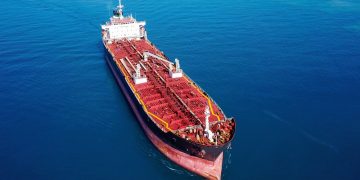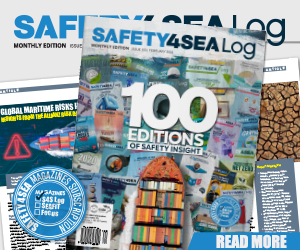Pacific Environment and Opportunity Green released a playbook for ports to accelerate action in the race to a zero-emission ocean shipping future.
The IPCC’s 2022 climate report issued dire warnings to end dependence on fossil fuels if we are to avoid the climate tipping point of 1.5 degrees Celsius of warming, and that includes shipping’s contribution to global emissions and port pollution.
Now is the time to transition the shipping industry to clean energy technologies and a zero-emission future
said the report.
The playbook focuses on three main tracks: commitments, policy, and progress. These tracks lay out nine actions that will end port pollution, accelerate the market for zero-emissions technologies, reward first movers and ensure reliable access to zero-emissions infrastructure and fuels.
#1 Commit to end port and shipping pollution with a goal of zero GHG emissions by 2040: Ports should announce, publish and implement a port-specific Zero-Emission Action Plan, co-designed with the local community.
#2 Create green shipping corridors: The purpose of these corridors is to create an ecosystem of ports that can support zero-emission ships, with onshore power (cold ironing), zero-emission fuel bunkering and shipyards that can service a zero-emission fleet.
#3 Abandon all fossil fuel projects: Ports can support the fossil fuel phaseout by retrofitting and replacing fossil fuel infrastructure and assets, and by abandoning any plans to build new fossil fuel assets. To mitigate financial losses, ports can work with public and private partners to repurpose stranded assets for brownfield projects. These transactions can help finance zero-emission infrastructure projects.
#4 Set mandatory zero-emission standards for all ships calling port: This would send a clear market signal to the shipping value chain to move toward zero emissions.
#5 Reward first movers and attract the world’s cleanest ships: Incentives are complementary to commitments and mandates for zero-emission shipping, and they should only reward first movers, early compliance with port mandates and environmental excellence.
#6 Implement environmental and ecological protection, preservation and resiliency measures that support pollution and emissions reductions: This can include minimizing channel-widening; Joining or establishing a Slow Steaming or Vessel Slow Down program; Banning scrubber and bonnet discharges; Considering adaptation needs for all infrastructure projects.
#7 Electrify everything possible: This can be done by shore-side electricity; transition harbor crafts, including tugboats, ferries, pilot craft, etc. to zero emissions.
#8 Provide clean energy and reliable fueling for zero-emission cargo ships by: Renewable energy procurement and development; Collaboration with industry initiatives.
#9 Center community and maritime worker involvement and support the port’s Zero Emission Action Plan: Engage with local communities to understand their concerns around current emissions and activity. Community and environmental groups will have justified concerns about nascent energy technologies and their impact on public health. Ports must be prepared to raise awareness about energy plans, educate the public and act in the best interest of public health.



































































I appreciate the informative article and expertise. keep up the great work!